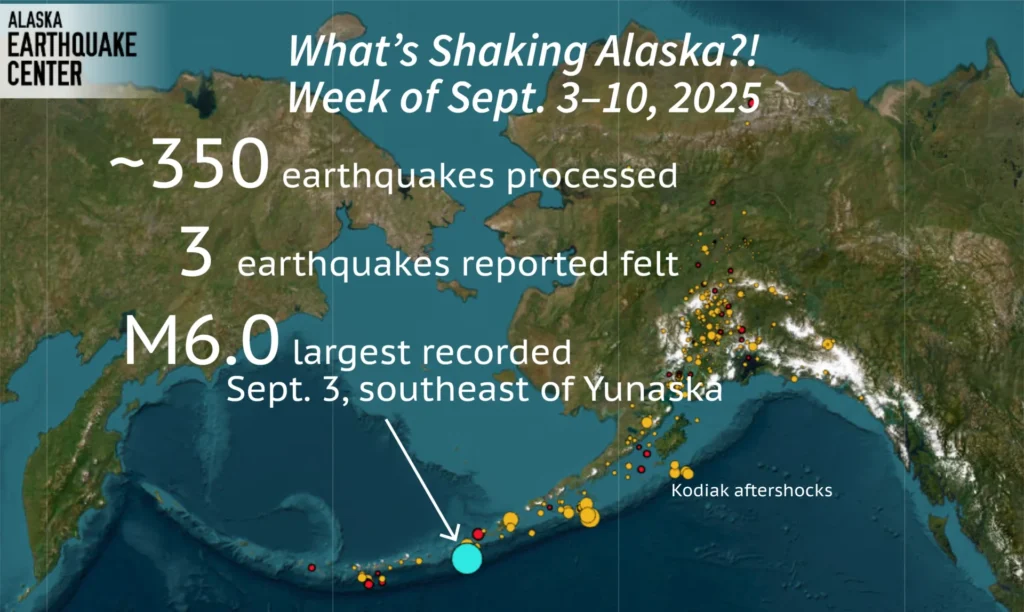Kodiak, Alaska, September 10, 2025. The Alaska Earthquake Center has shared its weekly update, focusing on seismic activity across the state and a recent earthquake near Kodiak Island.
Recent Seismic Activity
During the past week, scientists recorded about 350 earthquakes in Alaska. The strongest was a magnitude 6 quake in the western Aleutians on September 3. Three quakes were reported as felt by people in nearby areas.
On September 1, a magnitude 5 earthquake struck south of Kodiak Island. It was followed by at least 15 aftershocks, most occurring within the first 24 hours.
What Is a Mainshock–Aftershock Sequence?
When a series of more minor quakes follow a strong earthquake, it is called a mainshock–aftershock sequence. These aftershocks happen along the same fault line as the main earthquake. They are part of the natural process as the Earth’s crust adjusts to its new position.
The number and size of aftershocks usually decrease over time. Depending on how powerful the mainshock was, the process can take days, months, or even years.
For example, the 2018 magnitude 7.9 Offshore Kodiak Earthquake produced thousands of aftershocks that continued until early 2022. In contrast, the recent magnitude 5 quake near Kodiak showed a much faster decline, with aftershocks tapering off in just a day.
Ongoing Research in Kodiak and Homer
This week, researchers from the Alaska Earthquake Center are in Kodiak and Homer, testing a new sensor system designed to capture earthquake activity more effectively. Results from this project will be shared in the coming weeks.









